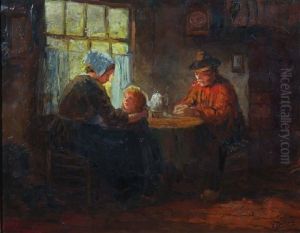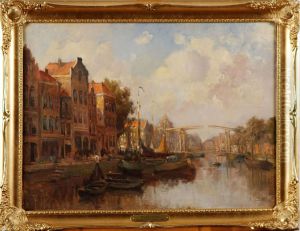Cornelis Terlouw Paintings
Cornelis Terlouw was a Dutch painter known for his impressionistic style, which he cultivated in the early 20th century. Born on September 23, 1891, in Leiden, Netherlands, Terlouw demonstrated a keen interest in art from a young age. His initial education and influences are not widely documented, but it is evident from his body of work that he was deeply affected by the changing tides of art in Europe at the time, particularly by the Impressionist movement.
During his career, Terlouw focused on landscapes, cityscapes, and river scenes, often capturing the play of light and shadow with a vibrant palette. His brushwork was characterized by a sense of fluidity and movement, with loose strokes that conveyed the transient effects of light. This was in keeping with the Impressionist preoccupation with capturing the momentary, sensory effect of a scene rather than the details of the subject.
Terlouw's works were well received in his home country and he participated in several exhibitions. However, his career was overshadowed by the two World Wars that marked his lifetime. The economic and social upheaval caused by these conflicts affected artists across Europe, and Terlouw was no exception. Nevertheless, he continued to paint and develop his artistic voice throughout these challenging times.
Cornelis Terlouw's life was cut short when he passed away on May 20, 1948, in Hilversum, Netherlands. Although he did not gain widespread international fame, his paintings have been appreciated by art collectors and enthusiasts, particularly those with an interest in Dutch Impressionism. Terlouw's work remains a testament to the enduring appeal of the Impressionist movement and provides a glimpse into the Dutch interpretation of this pivotal artistic era.



